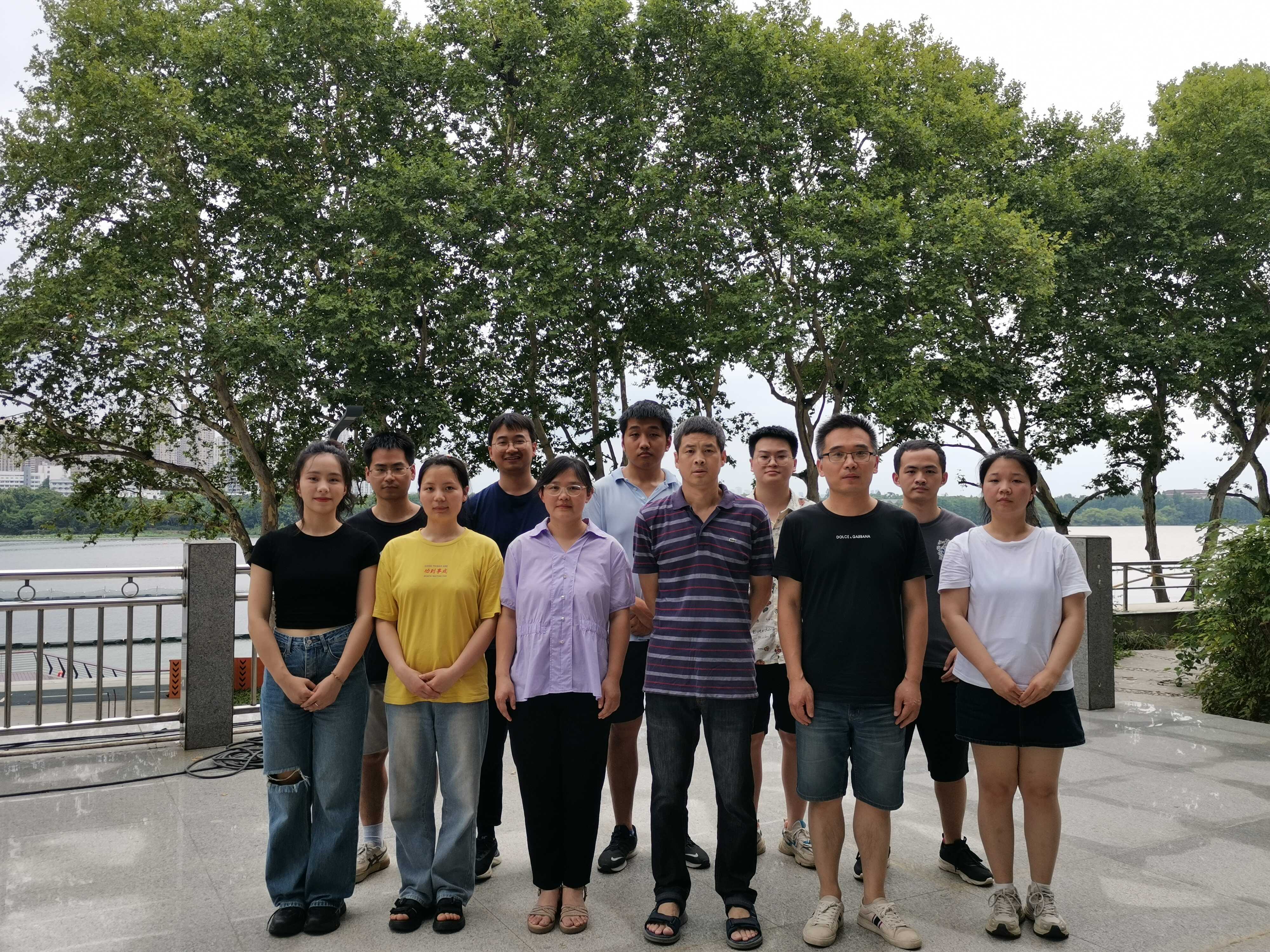
Centers
Research Group on Diatom and Biosynthesis

PI: Prof. Hanhua HU
Members:
Senior Engineer: Yufang Pan
Assistant Engineer: Hu Jin
Post-doctoral researchers: Wenxiu Yin, Chenjie Li
PhD students: Xiahui Hao, Zhaowen Hu
Postgraduate students: Chiyi Wang, Qin Huang, Shijun Liu, Qiufeng Zhan
Contact Us: hanhuahu@ihb.ac.cn
General Introduction:
Diatoms are a major group of algae, and are one of the most common types of phytoplankton. A characteristic feature of diatom cells is that they are encased within a unique cell wall made of silica (hydrated silicon dioxide) called a frustule. They contribute at least 20% of annual primary productivity, equivalent to the tropical rain forests, and are one of the most successful groups of eukaryotic algae in the contemporary ocean. The main storage compounds of diatoms are lipids (TAGs) and chrysolaminarin. We use Phaeodactylum tricornutum, a pennate diatom, as the research model to study the responses to environmental change and the lipid accumulation mechanism in diatom.
Selected Publications (*Corresponding author):
Diatom
[1]. Ge F, Huang W, Chen Z, Zhang C, Xiong Q, Bowler C, Yang J, Xu J, Hu H*. 2014. Methylcrotonyl-CoA carboxylase regulates triacylglycerol accumulation in the model diatom Phaeodactylum tricornutum. The Plant Cell. 26(4): 1681–1697.
[2]. Pan Y, Zhang W, Wang X, Jouhet J, Maréchal E, Liu J, Xia X, Hu H*. 2024. Allele-dependent expression and functionality of lipid enzyme phospholipid:diacylglycerol acyltransferase affect diatom carbon storage and growth. Plant Physiology. 194(2): 1024–1040.
[3]. Huang T, Pan Y, Maréchal E, Hu H*. 2024. Proteomes reveal the lipid metabolic network in the complex plastid of Phaeodactylum tricornutum. The Plant Journal. 117(2): 385–403.
[4]. Pan Y, Yang J, Gong Y, Li X, Hu H*. 2017. 3-hydroxyisobutyryl-CoA hydrolase involved in isoleucine catabolism regulates triacylglycerol accumulation in Phaeodactylum tricornutum. Philosophical Transactions of the Royal Society B‐Biological Sciences. 372(1728): 20160409.
[5]. Rastogi A, Vieira FRJ, Deton-Cabanillas A-F, Veluchamy A, Cantrel C, Wang G, Vanormelingen P, Bowler C, Piganeau G, Hu H*, Tirichine L*. 2020. A genomics approach reveals the genetic polymorphism, structure and functional diversity of ten accessions of the diatom Phaeodactylum tricornutum. The ISME Journal. 14: 347–363.
[6]. Schoefs B*, Hu H*, Kroth PG*. 2017. The peculiar carbon metabolism in diatoms. Philosophical Transactions of the Royal Society B‐Biological Sciences. 372(1728): 20160405.
[7]. Allen AE, Dupont CL, Oborník M, Horák A, Nunes-Nesi A, McCrow JP, Zheng H, Johnson DA, Hu H, Fernie AR, Bowler C. 2011. Evolution and metabolic significance of the urea cycle in photosynthetic diatoms. Nature. 473(7346): 203–207.
[8]. You L, Połońska A, Jasieniecka-Gazarkiewicz K, Richard F, Jouhet J, Maréchal E, Banaś A, Hu H, Pan Y, Hao X, Jin H, Allen AE, Amato A, Gong Y. 2024. Two plastidial lysophosphatidic acid acyltransferases differentially mediate the biosynthesis of membrane lipids and triacylglycerols in Phaeodactylum tricornutum. New Phytologist. 241(4): 1543–1558.
[9]. Seydoux C, Storti M, Giovagnetti V, Matuszyńska A, Guglielmino E, Zhao X, Giustini C, Pan Y, Blommaert L, Angulo J, Ruban AV, Hu H, Bailleul B, Courtois F, Allorent G, Finazzi G. 2022. Impaired photoprotection in Phaeodactylum tricornutum KEA3 mutants reveals the proton regulatory circuit of diatoms light acclimation. New Phytologist. 234(2): 578−591.
[10]. Hao X, Chen W, Amato A, Jouhet J, Maréchal E, Moog D, Hu H, Jin H, You L, Huang F, Moosburner M, Allen AE, Gong Y. 2022. Multiplex CRISPR/Cas9 editing of the long-chain acyl-CoA synthetase family in the diatom Phaeodactylum tricornutum reveals that mitochondrial ptACSL3 is involved in the synthesis of storage lipids. New Phytologist. 233(4): 1797–1812.
Nannochloropsis
[11]. Yang J, Liu J, Pan Y, Maréchal E, Amato A, Liu M, Gong Y, Li Y, Hu H*. PDAT regulates PE as transient carbon sink alternative to triacylglycerol in Nannochloropsis. 2022. Plant Physiology. 189(3): 1345−1362.
[12]. Hu H*, Gao K. 2006. Response of growth and fatty acid compositions of Nannochloropsis sp. to environmental factors under elevated CO2 concentration. Biotechnology Letters. 28(13): 987−992.
[13]. Hu H, Gao K. 2003. Optimization of growth and fatty acid composition of a unicellular marine picoplankton, Nannochloropsis sp., with enriched carbon sources. Biotechnology Letters. 25(5): 421−425.
[14]. Xin Y, Lu Y, Lee Y-Y, Wei L, Jia J, Wang Q, Wang D, Bai F, Hu H, Hu Q, Liu J, Li Y, Xu J. 2017. Producing designer oils in industrial microalgae by rational modulation of co-evolving type-2 diacylglycerol acyltransferases. Molecular Plant. 10(12): 1523−1539.
Methodology
[15]. Yin W, Hu H*. 2023. CRISPR/Cas9-mediated genome editing via homologous recombination in a centric diatom Chaetoceros muelleri. ACS Synthetic Biology. 12(4): 1287−1296.
[16]. Yin W, Hu H*. 2021. High-efficiency transformation of a centric diatom Chaetoceros muelleri by electroporation with a variety of selectable markers. Algal Research. 55: 102274.
[17]. Chen Y, Hu H*. 2019. High efficiency transformation by electroporation of the freshwater alga Nannochloropsis limnetica. World Journal of Microbiology & Biotechnology. 35(8): 119.
[18]. Wei L, Xin Y, Wang Q, Yang J, Hu H*, Xu J*. 2017. RNAi-based targeted gene-knockdown in the model oleaginous microalgae Nannochloropsis oceanica. The Plant Journal. 89(6): 1236−1250.
[19]. Zhang C, Hu H*. 2014. High-efficiency nuclear transformation of the diatom Phaeodactylum tricornutum by electroporation. Marine Genomics. 16: 63−66.
[20]. Li F, Gao D*, Hu H*. 2014. High-efficiency nuclear transformation of the oleaginous marine Nannochloropsis species using PCR product. Bioscience Biotechnology and Biochemistry. 78(5): 812−817.